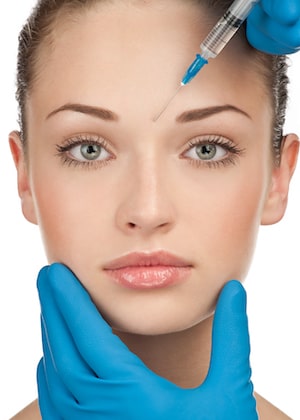
The demand for noninvasive cosmetic treatments continues as patients want to enjoy a younger look without undergoing an invasive surgery with a long recovery time. Instead, they are turning to procedures described as “tweakments” that enhance and refresh their appearance. One of the most popular noninvasive choices is Botox which helps to reduce the look of wrinkles in the treated area of the face. While it is a popular cosmetic treatment, is it safe for the majority of patients? The answer to this question is revealed in this informative article.
Botox is made from botulinum toxin, and it is placed in the body via injections. In general, Botox is a neurotoxin that impacts the nerves once it is injected into the targeted area on the face. After Botox is placed in the desired area on the body, it begins to disrupt the communication in the body between the muscles and the nerves. The blocking of these communications means the impacted muscles are not able to contract and the skin in the area becomes smoother with a reduced amount of existing wrinkles and new wrinkles are not able to be formed.

While the performance of Botox injections is mostly well-tolerated by patients, there are some side effects patients should know about before having the procedure. The severity of the side effects depends on the amount of Botox injected into the body and the experience and skill of the medical provider.
Since the results of Botox are not permanent, the risks and side effects listed above are usually temporary results. There are rare cases when a person who has frequent injections of Botox over an extended period of time can experience permanent changes to the face such as being unable to make certain facial movements.
In order to manage any of these possible Botox risks, there are some steps the patient can take once they start to appear. For example, ice packs can be applied to the skin soon after any bruising starts to appear at the injection site as the ice packs decrease the amount of bleeding under the skin.
If dry or irritated eyes start to occur, a lubricating eye drop purchased over-the-counter can be put in the eye to reduce the amount of irritation.
If the person is feeling some pain at the site of the injection, an over-the-counter topical pain medication such as lidocaine cream can be placed where the pain is located.
Patients can lessen the chance of any serious issues by having Botox injected by a professionally trained and licensed medical provider.
- MA